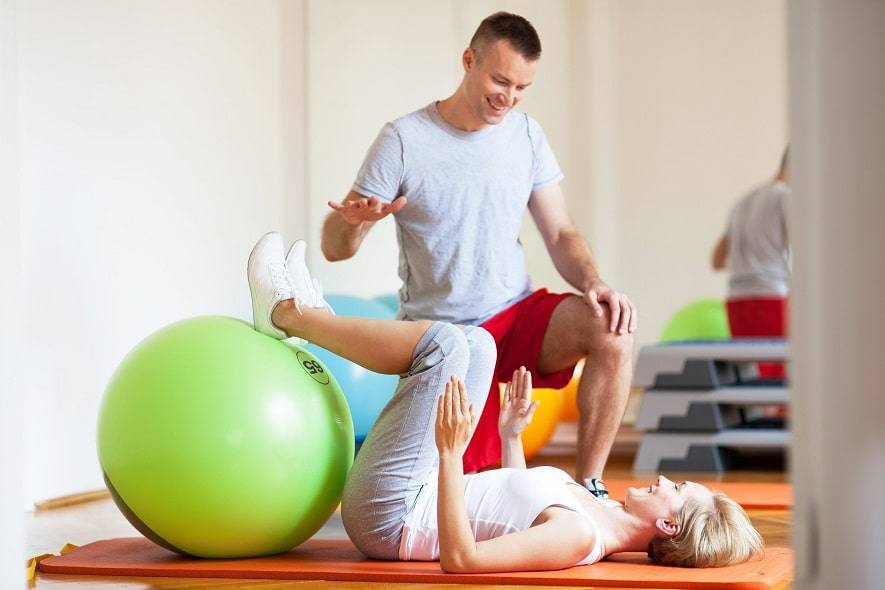Are you working in central London and are a fitness fan?
Looking for a good workout to do at home?
Stuck in your London office with long hours and complicated schedules?
Maybe you are injured and don’t know where to begin?
Whatever your life looks like, there is the perfect exercise for all.
You might have heard of Pilates, a trending discipline combining stretching, strengthening and respiratory exercises, to provide a full body and mind workout.
But how can one exercise work for us all?
Pilates focuses on eight basic pillars:
- breath,
- concentration,
- centre,
- control,
- precision and
- flow 1
- isolation
- routine specific to you as an individual.
Developing total muscle control by using muscle / exercise isolation (switching on and off muscles through exercise customisation) and maximise your progress through a finely customised to your needs Pilates routine is very important.
These eight principles are embedded into every exercise and adjusted according to expertise.
The best part?
Once you learn the basic principles, you are free to work out from home, the beach, the office or anywhere else you can think.
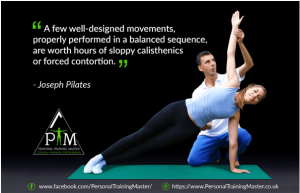
Fig 1. Jazz trains a client in his Pilates studio in central London.
The only tools needed:
- your body,
- mind and
- soul
Building from the inside out.
Pilates is a concept that builds from the inside out.
Joseph Pilates focused on body awareness through breathing, concentration and control to develop a full body workout.
He emphasised that, in order to master an exercise, attention to detail was important and could mark the difference between achieving or not a goal.1
Breath
“Breathing is the first act of life and the last. Our very life depends on it.”2
– Joseph Pilates
Respiration is one of the most important bodily tasks, yet it often goes unnoticed.
We are never taught how to breathe; we just know.
But do we know how to breathe properly?
As babies we breathe diaphragmatically (using the diaphragm as primary respiratory muscle).
As adults we transition to shallower breathing (chest breathing) which relies heavily on accessory breathing muscles over the diaphragm.
In Pilates, lateral breathing is used to actively engage the abdominal muscles during exhalation which in turn stabilises the trunk.1,2
Pilates described breathing as the fuel needed for our powerhouse (body) to run smoothly and emphasised awareness of breathing patterns.
Beyond the mechanical and biological process of breathing, Joseph regarded it as a unifying thread between the body, mind and spirit.1
Concentration
Forgetting the world and focusing on a workout is a very liberating experience; Pilates agreed.
Concentration is another essential pillar.
Not only should you be focused on correctly breathing and appropriate body alignment but on how your body feels as you transition from one position to another.
Every movement is meant to activate or relax certain areas and learning how to do so is crucial to their mastery.
This is why Pilates not only provides a workout body, but fully engages your mind seeking full awareness.1,2
Centre
The word centre can have different meanings.
When we think of balance, our centre of gravity rules all.
For adults, it is located a few centimetres below our belly button (around the upper third of the sacrum) and allows us to maintain balance as we sit, walk and perform different activities.
From a mental perspective, our mind is often referred to as our centre or powerhouse.
Through awareness, we are keeping our centre actively engaged in the activity; refining and correcting through trial and error.
Finally, from a muscular point of view, the centre or core refers to the muscles that maintain our posture while standing and through which movement originates.1,2,3
Control
Originally called Contrology, Pilates is about the mind’s control over the body.
Think back to when you had to learn a complex skill; like driving a manual car.
Initially, you consciously perform each skill separately (start the car, switch gears, break, etc.).
As a beginner, your transitions are usually rough and likely you skipped steps through the learning process.
Through practise, your body learns the task at hand; no longer needing a step-by-step checklist on how to drive.
Your body has created a motor programme that refined the movement pattern through practise and made it unconscious.
Repetition and awareness are the best ways to effectively gain control of a movement which is inherent to mastering it.1,2
Precision
As explained previously mastery is achieved through control, concentration, breathing and centre activation.
Every exercise in Pilates focuses on specific muscle groups which require precise movement and breathing to achieve the desired results.
Greater precision is achieved through regular practise and infinite corrections to achieving goals. 1,2
Flow
One of the most beautiful aspects of Pilates is that movement is meant to be developed throughout the session with a seamless flow.
As a beginner, it is likely that your sessions will be a little less flowing, as precision and control will take precedence over flow.
Through repetition, the movements will become motor programmes to be refined and somewhat of a dance where one movement will follow another and another using respiration as a unifying thread to transition from one to the next. 1,2
So, how does it all work?
Core muscles
We can think of the core as a box in the middle of our body.
The top is created by the diaphragm; dome-shaped muscle in charge of respiration.
The pelvic floor muscles create the bottom and, because of their size and disposition, tend to be the weakest link.
Finally, the spinal muscles and glutes create the back, the abdominal muscles the front and the transverses abdominus and multifidus the sides.3
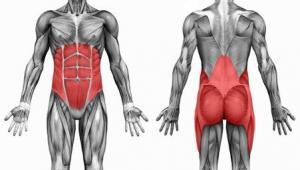
Fig 2. Core Muscles.
It was Joseph Pilates’ belief that optimal movement originates from the core and transfers to the limbs and rest of the body.
For this reason, it focuses on control, precision and body awareness of core muscle activation to correct postural imbalances and incorrect movement patterns.2
Strength, Flexibility and Mobility.
Pilates exercises are designed to increase in a smart way your muscle strength, endurance, flexibility, and to improve posture and balance.
With a few repetitions, usually no more than 10, the body is regularly exposed to new muscular and kinaesthetic challenges with coordinated breathing and precise placement, requiring consistent concentration.4
Weakness in core or stabilising muscles causes fatigue.
This is especially true under sustained low loads, such as sitting in front of a computer for long periods.
Re-educating the postural (stabilising) muscles of the spine has been shown to improve many musculoskeletal conditions such as back pain, neck pain and headaches. 4,5
Besides the physical benefits or daily practise, Pilates has been shown to improve:
- symptoms associated with mental and emotional health such as better sleep quality,
- decreased in depressive episodes and anxiety as well as
- overall improvement in wellness and well-being perceptions.6
Is Pilates for me? (Hint: the answer is YES)
The benefits of Pilates are all-encompassing: mind, body and soul.
Let’s review what the latest research studies have shown about the benefits of Pilates in different populations.
Pilates for the Elderly
As science, medicine and technology expand their knowledge, people are now able to live longer.
This has created a very interesting challenge: how can we provide better life conditions and functional independence to the elderly population to maximise their active participation in society? 7
Research shows that Pilates exercise has been associated with improvement in functional outcomes of tests on sleep quality, anxiety, depression and fatigue in senior citizens.
Likewise, stabilisation exercises are essential when developing a fall prevention programme or when rehabilitation is needed after a fall.
Through balance, coordination and body awareness exercises, seniors can reduce the incidence of falls; one of the most common causes of disability and death for this population around the world. 8,9,10
In post-menopausal women, osteoporosis is a frequent cause of kinesiophobia (fear of exercise).
It is a myth that women suffering osteoporosis should only engage in light exercise to avoid fractures.
Moderate intensity exercise is needed to revert the loss of bone as it activates repairing cells called osteoblasts that generate stronger tissue.
Given that one-to-one Pilates is progressive, customised and based on gaining body awareness and control, it is an excellent choice for elderly women to try. 9
Don’t let your age make you miss the best out of your life!
Start exercising today!
Call now for a FREE CONSULTATION by Jazz Alessi , one of the best Pilates teacher in London and exercise prescription specialists in UK.
Pilates at Work
Another 8-hour workday has gone by and you hop on your car to go home.
You are tired, hungry and ready to go to bed.
Does that sound like you?
More often than not, people spend long work hours in an office space, usually sitting down in front of a computer.
Coincidentally, Pilates is a wonderful option for those looking to exercise during or after a long, busy day at the office.
As an in-office wellness programme, one-to-one Pilates exercises have shown improvements in associated conditions such as:
- chronic diseases from sedentary lifestyles,
- chronic lumbar back pain,
- cervical back pain
- musculoskeletal diseases associated with poor postural patterns,
- shoulder pain
- meniscus injury and knee ligament sprains like ACL, PCL, MCL, and LCL
- rehabilitation after any type of knee surgery
- patella mal-tracking
- arthritic conditions
A 12-week Pilates exercise intervention that included just 1 hour per session, twice a week has been shown to significantly improve lower limb muscle strength and improve abdominal muscle endurance in adults.
Likewise, postural defects and deformities that occur from weak and over-active muscles can be prevented through stability training in the abdominal region, protecting the lumbar spine and associated structures from injury.11
Pilates for the Woman
As mentioned previously, the pelvic floor muscles are the weakest link in the core.
This is especially true in women because of pregnancy.
During childbirth, the muscles of the pelvic floor are often sectioned (this is called an episiotomy) to allow the baby to pass through the birth canal.
If left untreated, weakness in pelvic floor muscles can lead to incontinence (urinary and faecal) as well as organ prolapse in advance stages.
Many of these symptoms will not be obvious immediately after childbirth or even a few years later, which is why core muscle training is essential in women of reproductive age.12
During labour, a correct respiratory pattern can make a difference between a successful delivery and a complicated one.
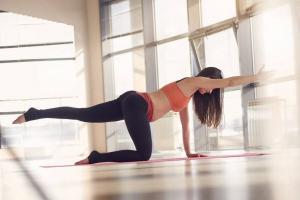
Fig 3. Pilates for women & customised Pilates for pregnancy.
It has been shown that Pilates promotes and contributes to a gestational period with no complications and reduces the risk of low-back pain and osteoarticular discomforts.
As a side not, although deemed a very safe exercise, it is important to have physician’s approval, before starting any exercise routine during pregnancy and especially in early stages. 12,13
Are you pregnant and unsure on how to start exercising?
Call now for a FREE CONSULTATION by Jazz Alessi, one of the best Pilates teacher in London and exercise prescription specialists in the UK.
Pilates in Rehabilitation
By now you must be thrilled to get started with Pilates and boost your brain and body!
But what if you are injured?
Where do you start?
Pilates is a fantastic rehabilitation tool when customised.
As with any rehabilitation process, it is essential to find a 2nd generation trained Pilates teacher in London to guide the rehab process after a complete and thorough evaluation.
The Pilates teacher will perform a comprehensive rehabilitation assessment first and it will determine the best series of exercises to perform aiming for control, muscles activation, precision and body awareness and incorporating correct breathing as you go.
If you have an injury and would like to start training you require exercise clearance from your medical doctor or physiotherapist.
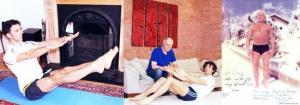
Fig 4. Pilates lineage: Joseph Pilates – founder (right hand side), Lawrence Hayward (Joseph’s 1st student trained as a teacher – in the middle whilst training Jazz) and Jazz Alessi (left hand side) a 2nd generation Pilates teacher.
Chronic Back Pain
Early muscles and joints mobilisation decreases the convalescence period after a musculoskeletal injury.
Through an customised Pilates session, you can start strengthening the core, improving your strength and mobility without straining the injured site.
Coordinating breathing while providing scapular, pelvic, and rib cage stabilisation during abdominal movements will lead to:
- better body alignment and
- an increase in the control of eccentric (lengthening and contracting muscle at the same time, it is the opposite of a concentric contraction) limb movements.
Therefore, not only does Pilates improve trunk stability but also mobility and smoothness of the rest of the body.3,14,15,16
One-to-one Pilates training maximises the exercise benefits and all positive effects on your body.
The comprehensive injury assessment, maximum attention to detail and customised programme for your needs dramatically reduces your injury rehabilitation time.
This is what Elizabeth said after training with Jazz.
“I noticed that the exercises we were performing on the upper body have changed the structure of my upper back and scapula. I’ve never been given exercises before that work both the upper and lower back together so effectively. In my personal experience Jazz provides rehab exercises more effective than any physio.”– Elizabeth Tiffany Edwards –
Don’t let your back pain keep you from enjoying yourself?
Call now for a FREE CONSULTATION by one of the best Pilates teacher and exercise prescription specialists in London.
Complement to most sports – Athletes and Celebrities
Pilates is a fantastic complement for every athletic discipline.
So, which athletes and celebrities benefited from Pilates?
Roger Federer, David Beckham, Miley Cyrus, Frank Lampard, Serena Williams, Andy Murray, Tiger Woods, Madona, Hugh Grant, Jennifer Aniston and Steven Gerrard are just a few examples of the world’s top athletes and celebrities who swears by the benefits of Pilates.
Duncan Critchley who’s an exercise researcher and lecturer at King’s Collage London reveals that “Pilates seems to activate the deeper abdominal muscles more than conventional gym exercises”.
Tennis, badminton, table tennis, shot-put, golf and a few more sports are well known to develop one part of the body more than the other.
Sports which are training one side of the body more are increasing asymmetry risks – this increases athletes spine injury risks.
However, research published in Medicine & Science in Sports & Exercise in August 2012 (Pub Med 22357302) shows that Pilates eliminates asymmetries of the torso.
Since it focuses on building stability through movement it deeply correlates to what is needed in any sport to prevent injuries.
Similarly, the need for a correct breathing pattern can be influential during competition.
Swimming, running or weightlifting performance can be deeply impacted by how and when you take a breath and can mark the difference between succeeding or losing.18
Postural alignment and body awareness are another way in which an individualised Pilates routine can make you more successful in your sport.
For example, a study demonstrated significant postural alignment in dancers through weekly Pilates sessions.
Through constant feedback that focused on spinal alignment and floor exercises, the dancers were able to achieve better postural alignment achieving a more aesthetic line and form and increasing their efficiency when executing a movement.5
Can you see how strong is the connection in between maximising exercise, sport performance and injury prevention?
Others
As versatile as it can be, Pilates can be adapted for the needs of any person with any condition.
Other interesting studies have identified improvement in performance and voice quality by professional singers through changes in the breathing pattern and better awareness of muscular group activation in Pilates routines.
Additionally, improvements in body composition through regular practise have been observed.
These effects have been even more notorious in people with obesity which could indicate that and individualised Pilates session would be the best way to begin exercising when aiming to lose weight in cases or severe obesity or before bariatric surgery. 19,20,21
Ready to give it a go?
With a plethora of benefits and almost infinite ways to develop your practise, Pilates is a discipline fit for all.
Focusing on correct body alignment, postural changes and muscle activation can greatly improve your functional outcomes in daily life.
Likewise, correcting or improving your breathing pattern can directly impact your performance in activities and sports.
Joseph Pilates famously said.
“In 10 sessions you’ll feel the difference, in 20 sessions you’ll see the difference, and in 30 sessions you’ll have a whole new body”.
Whether you are a senior citizen, a pregnant woman, an office worker or an injured athlete, and personalised session of Pilates can have amazing benefits to your body, mind and soul.
From the house, the beach or office, grab a mat and join the fun!
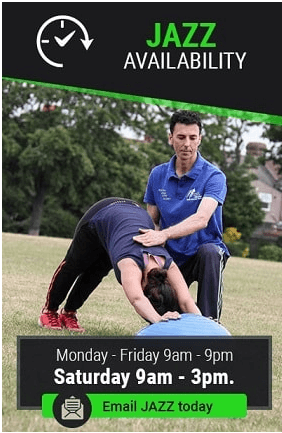
Fig 5. Jazz trains a client in Central London.
For your FREE CONSULTATION, contact London’s Best Pilates trainer, Jazz Alessi by telephone at 020 3633 2299 (Monday – Fri: 6:30am to 9pm – Saturday: 8am to 3pm) or go online for more information on Pilates programmes customised to your needs, exercise rehabilitation procedures, and Pilates personal training services offered https://www.personaltrainingmaster.co.uk/
Sources:
- Isacowitz, R., Clippinger, K.S., Pilates anatomy, Second edition. ed. Human Kinetics, Champaign, IL.
- Wood, S., 2019. Pilates for rehabilitation. Human Kinetics, Champaign, IL.
- Bliss, L.S., Teeple, P., Core stability: the centerpiece of any training program. https://doi.org/10.1007/s11932-005-0064-y
- Ahearn, E.L., Greene, A., Lasner, A. Some Effects of Supplemental Pilates Training on the Posture, Strength, and Flexibility of Dancers 17 to 22 Years of Age. https://doi.org/10.12678/1089-313X.22.4.192
- Parikh, D., Arora, P., Role of Pilates in Rehabilitation: A Literature Review. https://doi.org/10.5455/ijtrr.000000148
- Mental health: Fleming, K.M., Herring, M.P., The effects of pilates on mental health outcomes: A meta-analysis of controlled trials. https://doi.org/10.1016/j.ctim.2018.02.003
- Curi Pérez, V.S., Haas, A.N., Wolff, S.S.,Analysis of activities in the daily lives of older adults exposed to the Pilates Method. https://doi.org/10.1016/j.jbmt.2013.10.004
- Wang, W., Chen, K.-H., Pan, Y.-C., Yang, S.-N., Chan, Y.-Y., Effect of yoga on sleep quality in women: a systematic review and meta-analysis (preprint). https://doi.org/10.21203/rs.2.12592/v1
- Oksuz, S., Unal, E.,The effect of the clinical pilates exercises on kinesiophobia and other symptoms related to osteoporosis: Randomised controlled trial. https://doi.org/10.1016/j.ctcp.2016.12.001
- Balance and fall prevention: Moreno-Segura, N., Igual-Camacho, C., Ballester-Gil, Y., Blasco-Igual, M.C., Blasco, J.M., The Effects of the Pilates Training Method on Balance and Falls of Older Adults: A Systematic Review and Meta-Analysis of Randomised Controlled Trials. https://doi.org/10.1123/japa.2017-0078
- Tsai, Y.-W., Wang, K.-M., n.d. Pilates Exercise to Improve Lower limb strength and Abdominal endurance in the workplace. JPES 2016. https://doi.org/10.7752/jpes.2016.02063
- Lemos, A.Q., Brasil, C.A., Valverde, D., Ferreira, J. dos S., Lordêlo, P., Sá, K.N.,The pilates method in the function of pelvic floor muscles: Systematic review and meta-analysis. https://doi.org/10.1016/j.jbmt.2018.07.002
- Martin C, A., Alvares R, F., Nascimento T, R., Paranaiba SS, W., Silva Morais T, K. da, Santos D, C., Pilates for Pregnant Women: A Healthy Alternative. https://doi.org/10.4172/2167-0420.1000366
- Kofotolis, N., Kellis, E., Vlachopoulos, S.P., Gouitas, I., Theodorakis, Y.,Effects of Pilates and trunk strengthening exercises on health-related quality of life in women with chronic low back pain. https://doi.org/10.3233/BMR-160665
- Wells, C., Kolt, G.S., Marshall, P., Bialocerkowski, A., 2014. The Definition and Application of Pilates Exercise to Treat People With Chronic Low Back Pain: A Delphi Survey of Australian Physical Therapists. Physical Therapy 94, 792–805. https://doi.org/10.2522/ptj.20130030
- Shariat, A., Alizadeh, R., Moradi, V., Afsharnia, E., Hakakzadeh, A., Ansari, N.N., Ingle, L., Shaw, B.S., Shaw, I., 2019. The impact of modified exercise and relaxation therapy on chronic lower back pain in office workers: a randomised clinical trial. J ExercRehabil 15, 703–708. https://doi.org/10.12965/jer.1938490.245
- Çelik, D., Turkel, N., 2017. The effectiveness of Pilates for partial anterior cruciate ligament injury. Knee Surg Sports TraumatolArthrosc 25, 2357–2364. https://doi.org/10.1007/s00167-015-3718-1
- Tinoco-Fernández, M., Jiménez-Martín, M., Sánchez-Caravaca, M.A., Fernández-Pérez, A.M., Ramírez-Rodrigo, J., Villaverde-Gutiérrez, C.,The Pilates method and cardiorespiratory adaptation to training. https://doi.org/10.1080/15438627.2016.1202829
- Singing Mezzedimi, C., Spinosi, M.C., Patalano, M., Ferretti, F., Iezzi, L., Voice and Pilates: The influence of Pilates on the singing voice. https://doi.org/10.1016/j.rlfa.2019.03.004
- Obesity: Şavkin, R., Aslan, U.B. The effect of Pilates exercise on body composition in sedentary overweight and obese women.https://doi.org/10.23736/S0022-4707.16.06465-3
- Aladro-Gonzalvo, A.R., Machado-Díaz, M., Moncada-Jiménez, J., Hernández-Elizondo, J., Araya-Vargas, G., The effect of Pilates exercises on body composition: A systematic review. https://doi.org/10.1016/j.jbmt.2011.06.001



